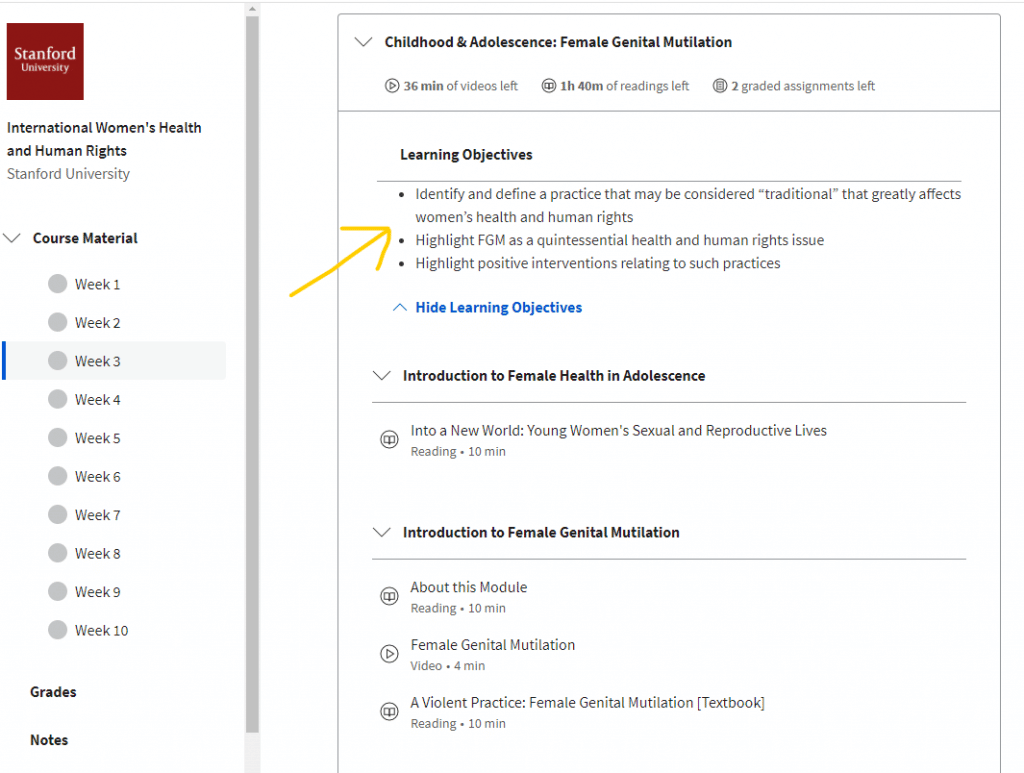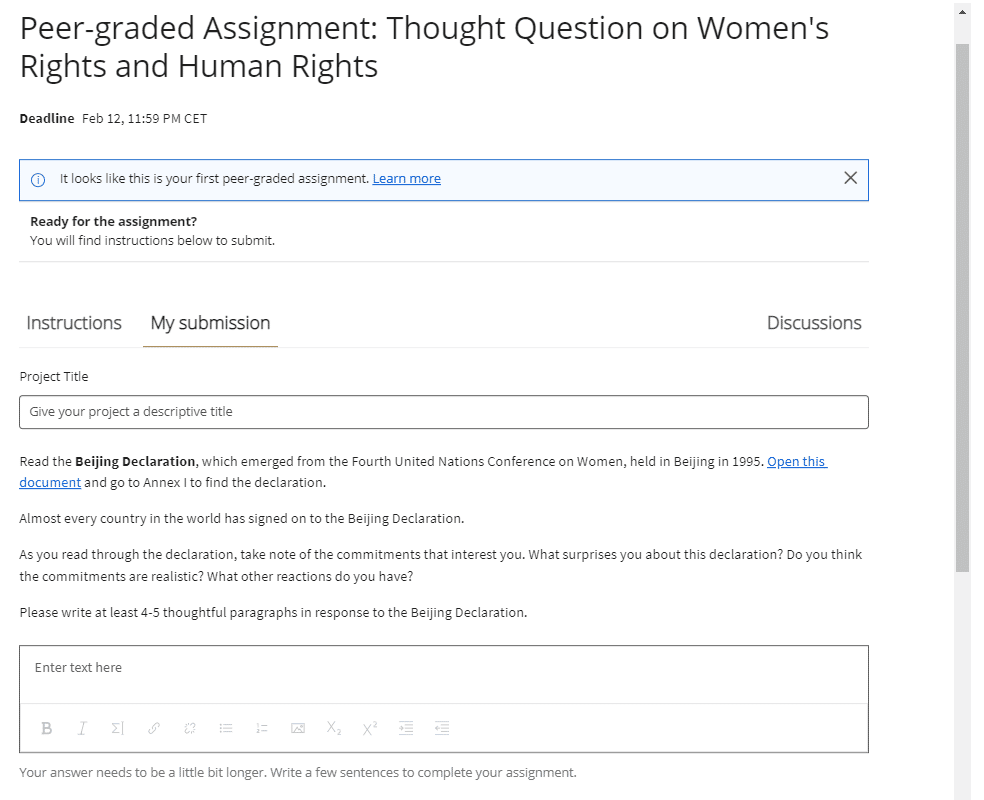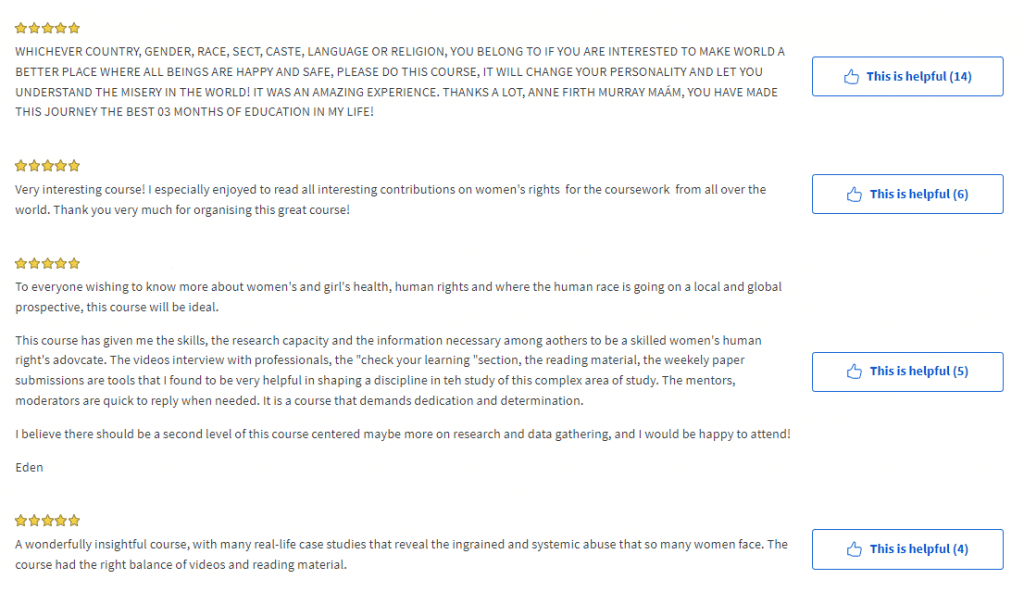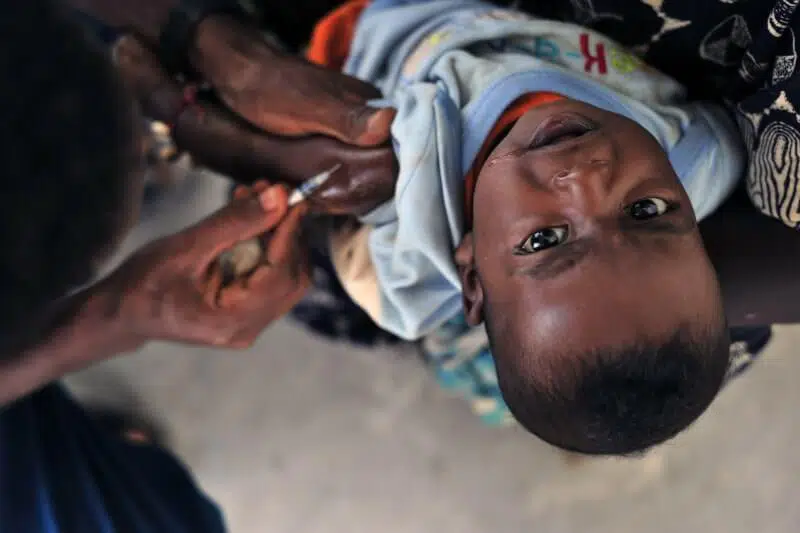| Stanford University | |
| 58 hours | |
| Coursera | |
| English | |
| 8 weeks |
Equip yourself with knowledge and skills to promote and defend women’s rights as an activist or human rights professional.
Everyone has human rights. But far too long have women’s rights been neglected, threatened and violated. Lack of access to education, restrictions to reproductive rights, income inequality, sexism, gender-based violence and femicides are issues women are facing every single day. Change starts with education and you can join in to make a difference.
Stanford University is offering a course on International Women’s Health and Human Rights. In this course you will learn about a variety of issues related to women’s rights including the right to education, female genital mutilation, gender-based violence, ending poverty, access to healthcare and women in war and refugee settings. Among the most popular human rights courses on Coursera, more than 96,000 learners have enrolled in the MOOC and rated it 4.9 stars out of 5. The highest user-rating we have seen. You can audit the course for free or opt-in for a paid certificate for an extra fee. The course is self-paced and takes roughly 58 hours to complete.
How will you learn?
The course is taught by scholar-activist Anne Firth Murray, founder of the Global Fund for Women and lecturer at Stanford University. Several other speakers are featured throughout the journey, including Wu Quing (China), a former board member of the Global Fund for Women, Isha Daramy, a midwife from Sierra Leone, Caitlin Gerdts, who works at the intersection of reproductive health and public health in California and more.
The course starts with providing orientation to learners. It clearly outlines what you will be able to do after completing each unit of the course (Screenshot below). Beyond this guidance, a section on frequently asked questions provides orientation on schedule, certificates, and specifically peer-graded activities.

The build-up of the course follows the human life circle from infancy to old age. It contains ten units including Introduction, Education, Childhood & Adolescence: Female Genital Mutilation, Childhood & Adolescence: HIV/AIDS, Reproductive Health, Violence Against Women in the Home and Community, Women in War and Refugee Settings, Women’s Quest to Escape Poverty, and Women, Aging, and End of Life.
One thing we especially liked about the course is that it was developed in a participatory way based on input from the community of the Global Fund for Women. In the introductory video Murray outlines:
What were the issues that they thought were so important that they would create organizations to address them? I identified those issues, and I built my classes around them.
Anne Firth Murray, scholar-activist
In the introductory video Murray also mentions that her classes are designed for active participation and go beyond reading assignments, quizzes, and passively watching video lecturers. Did Murray succeed? We think so.
Each week contains a peer-graded activity where you are encouraged to submit your own reflections, thoughts and ideas. Overall, the course offers plenty of other opportunities to engage, share and learn from others.

The first discussion prompt encourages learners to read the Universal Declaration of Human Rights and a free-to-download chapter of Murray’s book “From Outrage to Courage”, which highlights key issues women are facing, and share their thoughts.
Other discussion activities are more complex. For example, one activity related to the UN Convention on the Elimination of All Forms of Discrimination Against Women (CEDAW), encourages learners to first look up the status of CEDAW in their own country, identify if the country has made any reservations, and then share the findings in the discussion forum. The course design team also created a website that is available in the course, that provides learners with the opportunity to create and join their own local groups advocating for women’s rights.
In terms of accessibility our quick review shows that the course meets the standard benchmarks required for WCAG 2.1 AA accessibility criteria. The course videos contain closed captions and almost all images contain alt-descriptions. In the rare cases where alt-descriptions are missing, the images do not convey any learning content. However, one suggestion for improvement would be to make the chapters of the downloadable .pdfs available in HTML format, making it easier for screen-readers to digest the content.
What we like best about this course is its action-oriented design. Murray highlights positive interventions throughout the course and uses real-life case studies to explain important concepts. This creates a very motivational and inspiring learning experience. In addition, there are advanced assignments, labelled ‘Engage Your Community’ where learners engage in real-life tasks outside of the course. The assignments include tasks such as interviewing a person working at a community organisation and writing a report about the experience (Week 5) or interviewing a 30 year older or younger person about their ideas concerning women’s health and human rights (Week 10).
Overall, we highly recommend this course if you would like to deepen your knowledge and skills to promote and defend women’s rights. In conclusion, here are some of the learner reviews, that other learners considered helpful.

How do you receive a certificate?
The course includes plenty of graded activities (~ 45) to check what you have learnt. Each activity counts 1-4% towards the passing grade. The activities consist of quizzes and peer-graded assignments that learners need to complete. To pass the course, you need to score 80% on these activities, which won’t be a problem if you follow the course attentively and actively participate.
Is the course free?
The course is free to audit. However, if you would like to obtain a verified certificate you have to pay a fee. The fee will depend on your location and currency but is normally around 27 EUR or an equivalent in other currencies. Please note that Coursera offers financial aid to learners who cannot afford the fee.












